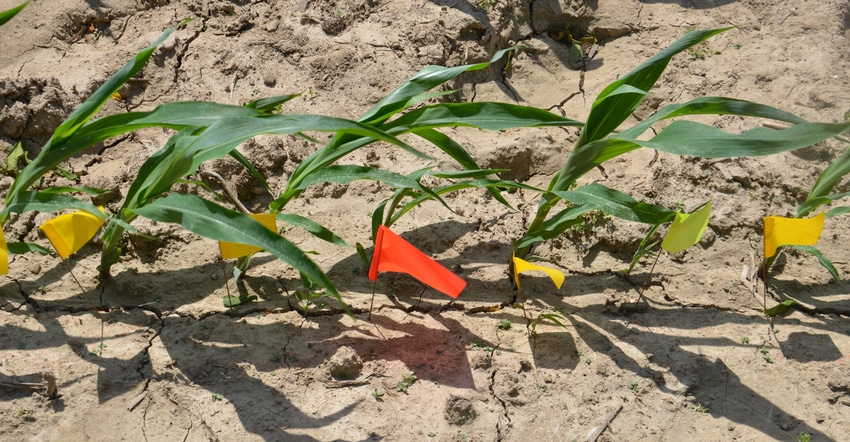
A corn plant emerges a couple of days later than its neighbors on both sides of the row. It was spaced correctly. It just came up late. What will happen to that plant?
Dave Nanda, director of genetics for Seed Genetics Direct, says the outcome may not be favorable for the plant. Seed Genetics Direct is the sponsor of Corn Watch ’20. This project follows a cornfield during the entire season. Observations made in this field may help explain things that happen in your fields, even though soil types and weather conditions will vary.
If neighbors on either side of a plant get a head start, the smaller plant may not be able to compete as well for sunlight, nutrients and moisture, Nanda says. As a result, it may lag throughout the season.
Usually one of two things happens, he notes. The plant that lags either produces a smaller ear, or it produces no ear, if the difference in growth stages is large enough. So, it contributes less yield or no yield.
“It can actually be worse than not having a plant there at all if it winds up being a barren stalk,” Nanda says. “It draws off some nutrients and water, which could go to neighboring plants, and returns no value.
“It’s actually worse than a weed, which also hurts yield by competing against corn plants for water and nutrients. You can take weeds out with postemergence herbicides, but you can’t take out a late emerger with herbicides.”
Follow effects of uneven emergence
With consultants, agronomists and companies emphasizing the importance of even emergence recently, more people are watching uniformity of emergence early in the season. One consulting firm in Indiana asked each of its several agronomists to put out a plot where they flagged corn by day of emergence. Some farmers are also putting out these plots.
The real payoff from this effort comes from following these plots, usually 1/1,000 of an acre, through harvest. That’s when you can tell if the late emergers truly produced less grain per stalk, or no grain, Nanda says.
What you can do now if you’ve noticed uneven emergence is begin tracking possible causes. Did you see more late emergers in some rows than others? If so, was depth adjustment different in that row? Was it just one plant emerging later here and there, or was there a pattern? Were there a number of late-emerging plants?
Typically, agronomists note that if emergence is delayed by 48 hours or more, it’s more likely to cause an impact. In the Corn Watch ’20 emergence plot, a two-day delay appeared to cause a difference. A four-day delay caused even bigger differences in size. Will those plants catch up or remain behind in development?
Those issues will become clearer as the season progresses toward harvest, Nanda says.
About the Author(s)
You May Also Like




